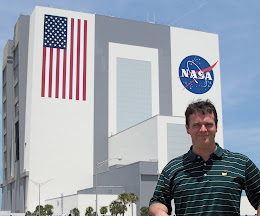
The seven member crew for the next space shuttle flight are nearing the end of their training as their February 12th launch day inches closer and closer.
They have been in training for over a year to prepare for their flight to the international space station, traveling all over the United States and spending hundreds of hours in shuttle simulators and up in the air.
On Thursday afternoon, Discovery's commander and pilot, Lee Archambault and Tony Antonelli, traveled to Edwards, AFB in California to practice landings in a Gulfstream II jet known as the Shuttle Trainer Aircraft. They will spend this morning making touch and go's on the two main runways in the California desert.
Joseph Acaba, John Phillips, Steve Swanson, Richard Arnold and Japan Aerospace Exploration Agency astronaut Koichi Wakata round out the crew of seven.
Discovery's crew will travel late Sunday here to the Kennedy Space Center for three days of launch day training known as TCDT. This Wednesday, the crew will act as if it was launch day as they awake, dress in their orange partial pressure suits and climb aboard Discovery for the practice countdown.
Launch of Discovery on mission STS-119 is currently targeted for February 12th at 7:32 am EST.
























